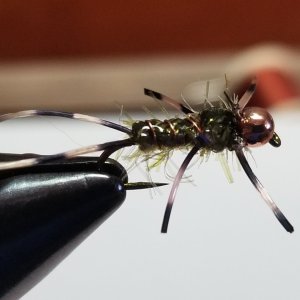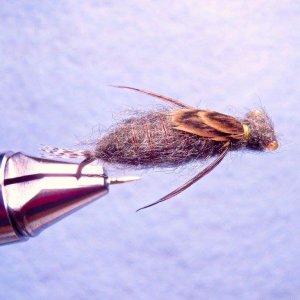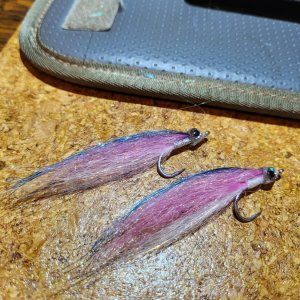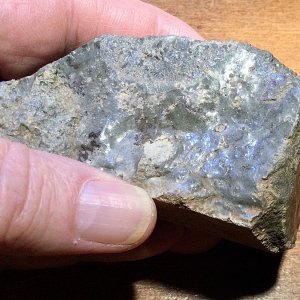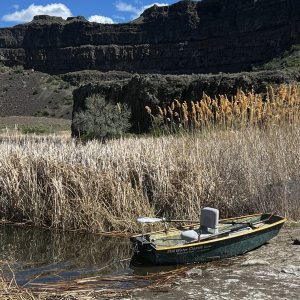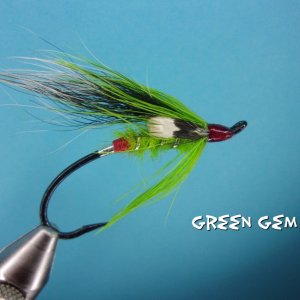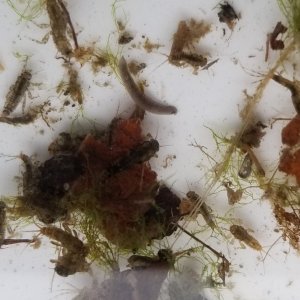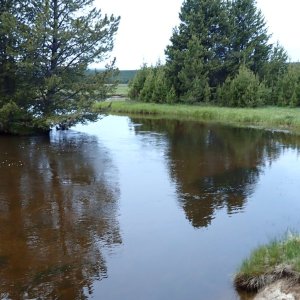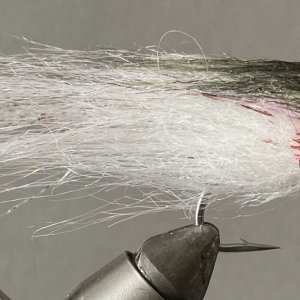This fall I decided to focus on troutski's rather than salmon but I've been getting my butt kicked while trying to find some sea runs in my local river, so I thought I'd ask for some pointers.
For background, I live in Whatcom county/NW Washington. Maybe this makes for different SRC fishing than those who live in the south sound and maybe elsewhere...I don't know. I've only tried for them a handful of times in years past (in the salt) but gave up rather quickly after not finding many....and they were only a by catch once the salmon were in the river. So this fall I challenged myself to make a valiant effort, but my ego can only take so many skunkings and four outings in with little success I'm trying to figure out how badly I suck or if it's the lack of fish or both.
I know very little about these guys. I have Chester Allen's book and evidently need to re read it...but even so I recall he was more focused on the salt and currently I'm focusing on the fresh water side. So here we go...
- At this time of year, will they spawning be up in the smaller creeks/tributaries? and therefore not in the main stems or bigger river forks?
- OR, will they more likely be scooping up loose eggs behind spawning salmon?...so find salmon and likely find SRC?
- and will they go dour after periods of lower water or lack of freshets?
So far I've focused on about a 2 mile stretch of river in my outings. Mostly, I'm either stripping/twitching reverse spiders or swinging muddlers or a small baitfish streamer. I've spent time at the pools surrounding log jams and swung entire runs. I think I've found 2 fish in 16-20 hours of water time.
On the plus side....
-I've gotten to see a bunch of ouzels, which are one of my favorite water birds.
- saw what I believe are black bear tracks
![IMG_5391[1].JPG IMG_5391[1].JPG](https://pnwflyfishing.com/forum/data/attachments/29/29591-7669154438141c7958182c257c244e81.jpg)
dragged my dog like a suitcase through deeper water so she wouldn't swim into a water hazard
![IMG_5378[1].JPG IMG_5378[1].JPG](https://pnwflyfishing.com/forum/data/attachments/29/29592-23998913134d69054b418f2cc2b9b3f3.jpg)
got the crap scared out of me by startling a small herd of elk... and MAYBE spooked a Sasquatch ....but it would be really cool to start hooking a few more fish....have any suggestions?
....but it would be really cool to start hooking a few more fish....have any suggestions?
Thanks in advance,
Mike d
For background, I live in Whatcom county/NW Washington. Maybe this makes for different SRC fishing than those who live in the south sound and maybe elsewhere...I don't know. I've only tried for them a handful of times in years past (in the salt) but gave up rather quickly after not finding many....and they were only a by catch once the salmon were in the river. So this fall I challenged myself to make a valiant effort, but my ego can only take so many skunkings and four outings in with little success I'm trying to figure out how badly I suck or if it's the lack of fish or both.
I know very little about these guys. I have Chester Allen's book and evidently need to re read it...but even so I recall he was more focused on the salt and currently I'm focusing on the fresh water side. So here we go...
- At this time of year, will they spawning be up in the smaller creeks/tributaries? and therefore not in the main stems or bigger river forks?
- OR, will they more likely be scooping up loose eggs behind spawning salmon?...so find salmon and likely find SRC?
- and will they go dour after periods of lower water or lack of freshets?
So far I've focused on about a 2 mile stretch of river in my outings. Mostly, I'm either stripping/twitching reverse spiders or swinging muddlers or a small baitfish streamer. I've spent time at the pools surrounding log jams and swung entire runs. I think I've found 2 fish in 16-20 hours of water time.
On the plus side....
-I've gotten to see a bunch of ouzels, which are one of my favorite water birds.
- saw what I believe are black bear tracks
![IMG_5391[1].JPG IMG_5391[1].JPG](https://pnwflyfishing.com/forum/data/attachments/29/29591-7669154438141c7958182c257c244e81.jpg)
dragged my dog like a suitcase through deeper water so she wouldn't swim into a water hazard
![IMG_5378[1].JPG IMG_5378[1].JPG](https://pnwflyfishing.com/forum/data/attachments/29/29592-23998913134d69054b418f2cc2b9b3f3.jpg)
got the crap scared out of me by startling a small herd of elk... and MAYBE spooked a Sasquatch
Thanks in advance,
Mike d

